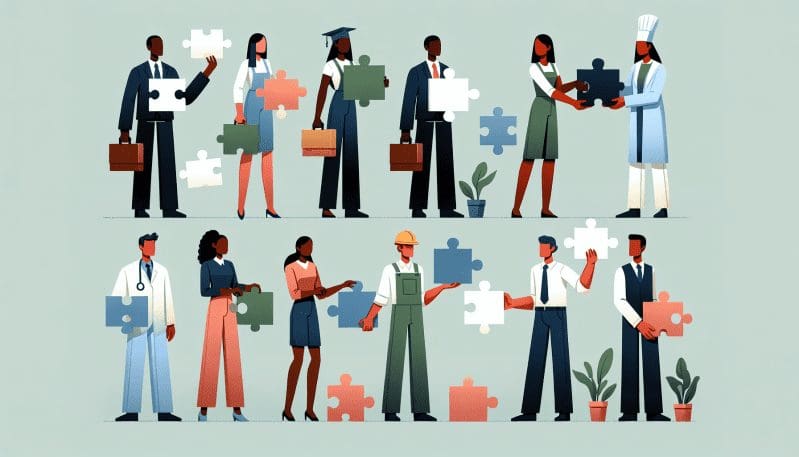Reshaping the Post-Pandemic Workforce: Addressing the Skills Gap in the New Normal
- Home
- Reshaping the Post-Pandemic Workforce: Addressing the Skills Gap in the New Normal
- Editors Desk
- April 17, 2024
- 0 Comments
As the dust of the COVID-19 pandemic begins to settle, a transformed landscape of work emerges, exhibiting both formidable challenges and unprecedented opportunities. The rapid pace of change has caught many industries off-guard, leading to a significant skills gap that threatens to widen if left unaddressed. Organizations are now at a pivotal turning point where proactive efforts toward upskilling and reskilling are not just beneficial but vital for survival in the new normal.
The first step for organizations is to perform a comprehensive skills audit to pinpoint exactly where the gaps lie. This data-driven approach allows for the identification of current workforce competencies and the discrepancies between existing skills and those required for future success. Once the gaps are identified, companies can develop targeted training programs tailored to bridge these voids.
Embracing technology is non-negotiable in this journey. Digital platforms enable the scalability and accessibility of training programs across geographical boundaries. For instance, e-learning modules, virtual reality (VR) simulations, and AI-powered assessments can provide a blend of theoretical and practical knowledge that can be applied on the job.
However, technology alone does not guarantee success. A cultural shift towards continuous learning must be engendered within organizations. Leaders need to champion learning as a key component of employee development and career progression. Incentives, recognition, and clear pathways for advancement can motivate employees to take personal accountability for their growth.
Education systems must also align with the changing demands of the workforce. Partnerships between businesses and educational institutions can ensure that curriculum development is in sync with industry requirements, thereby producing a workforce equipped with relevant skills from the get-go.
Government policy plays a crucial role in this ecosystem, providing incentives for businesses to invest in employee training and creating frameworks for certifications that standardize skill sets. Moreover, policies that support workforce re-entry for individuals who’ve experienced pandemic-induced job displacement can mitigate long-term unemployment and its associated economic effects.
Case studies, such as that of a leading technology firm that implemented a ‘skills cloud’ to track, nurture, and deploy talent based on evolving project demands, demonstrate the successful adaptation of workforce strategies. Another example is a manufacturing company that partnered with local community colleges to create apprenticeship programs that mix classroom learning with on-the-job training.
Businesses looking to remain competitive in this rapidly evolving job market must focus on creating dynamic and flexible learning environments. By fostering a culture that values upskilling, prioritizing partnership with educational entities, and engaging with policy developments, organizations can ensure they are well-equipped to face the future. Ultimately, adapting to the new normal is not just about leveraging technology but about valuing and investing in human capital to ensure that indeed, no worker is left behind.


Leave A Comment